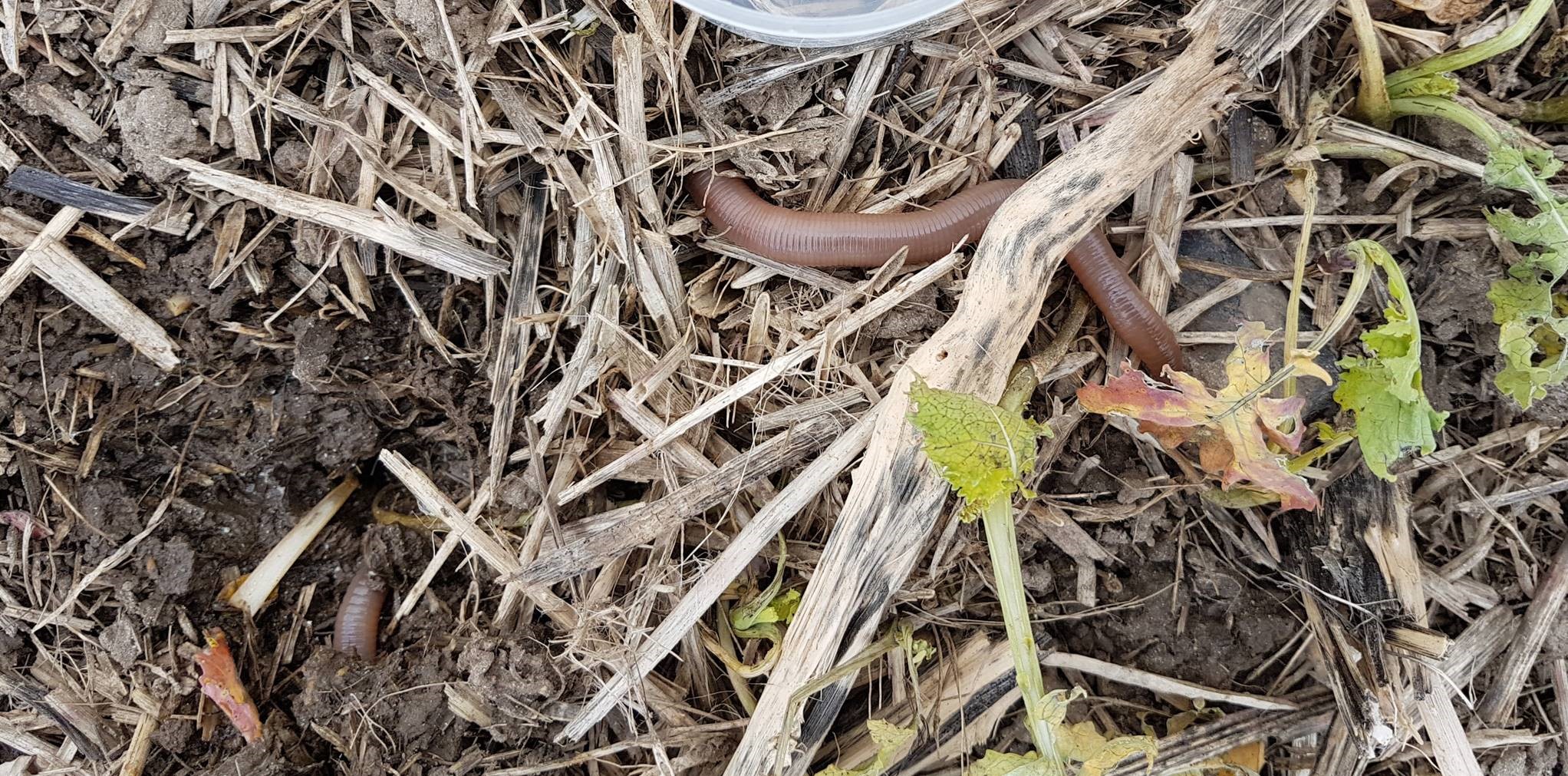
Earthworms
The earthworms or Lumbricidae attain the largest biomass in soil among soil invertebrates. They occur in high abundance and diversity in soils worldwide except for deserts and arctic tundra[1]. In temperate regions average abundance and biomass is about 100 specimen per square meter[2], and even in intensively managed arable soils still about 50 g fresh earthworm biomass can be found per square meter though one order of magnitude less than in pasture and grassland2. Earthworms contribute to the functioning of soil ecosystems by consuming decaying plant matter, creating burrows that aerate soil and allow water to infiltrate soil; in its entirety, they contribute considerably to soil formation[3]. Earthworms contribute to three of the four soil function models; Water Regulation and Purification, Nutrient Cycling and Carbon Sequestration and Climate Regulation, through their role in supporting the processes of aggregation, bioturbation, fragmentation and macropore formation.
The upper part of soil will have passed through the earthworm gut every tenth year and are therefore entirely coprogenic, i.e. made up of earthworm excrements and casts[4],[5]. A large body of knowledge and ongoing research is centered on earthworms and this has led to acknowledgement of their crucial role. Thus, most new chemicals with a fate in soil will be tested according to ISO or OECD standards[6],[7].
Earthworms respond to land management, agriculture and chemicals in soil, so the species composition and their abundance will reflect any change in soil structure and food availability and quality. Hence, their abundance and diversity is used to calculate soil health indices[8].
Earthworms can be hand-sorted from soil and their enumeration and identification are highly standardized[9] and facilitated by concise easily accessible identification keys[10], although some level of expert knowledge is needed for precise identification. Currently, earthworm DNA in soil, i.e. eDNA, has slowly been adopted for assessment of earthworm diversity, thus avoiding the need for taxonomic expertise for earthworm identification[11].

Text by Dr. Paul Henning Krogh, Department of Bioscience, Aarhus University
[1] Petersen H & Luxton M. 1982. A comparative analysis of soil fauna populations and their role in decomposition processes. Oikos 3: 287-388.
[2] Krogh PH et al. 2021. Earthworm burrow number and vertical distribution are affected by the crop sequence of a grass-clover rotation system. European Journal of Soil Biology 103: 103294.
[3] Blouin M et al. 2013. A review of earthworm impact on soil function and ecosystem services. European Journal of Soil Science 64: 161-182.
[4] Whalen JK & Sampedro L. 2010. Soil ecology and management. CABI.
[5] Taylor AR & Taylor AFS. 2014. Assessing daily egestion rates in earthworms: using fungal spores as a natural soil marker to estimate gut transit time. Biology and Fertility of Soils 50: 179-183.
[6] OECD. 2016. Test No. 222: Earthworm Reproduction Test (Eisenia fetida/Eisenia andrei). DOI: 10.1787/9789264264496-en
[7] ISO. 2014. International Organization for Standardization. ISO No. 11268-3 Soil quality – Effects of pollutants on earthworms – Part 3: Guidance on the determination of effects in field situations. Geneva (CH).
[8] Fusaro S et al. 2018. Soil Biological Quality Index based on earthworms (QBS-e). A new way to use earthworms as bioindicators in agroecosystems. Ecological Indicators 93: 1276-1292.
[9] ISO. 2018. International Organization for Standardization. ISO 23611-1:2018 ― Soil quality ― Sampling of soil invertebrates. Part 1: Hand-sorting and formalin extraction of earthworms. Geneva (CH).
[10] OPAL (Open Air Laboratories): Citizen science for everyone. 2015. Earthworm Identification Guide: OPAL Soil and Earthworm Survey. URL: imperial.ac.uk/media/imperial-college/research-centres-and-groups/opal/SOIL-4pp-chart.pdf
[11] Bienert F et al. 2012. Tracking earthworm communities from soil DNA. Molecular Ecology 21: 2017–2030.
